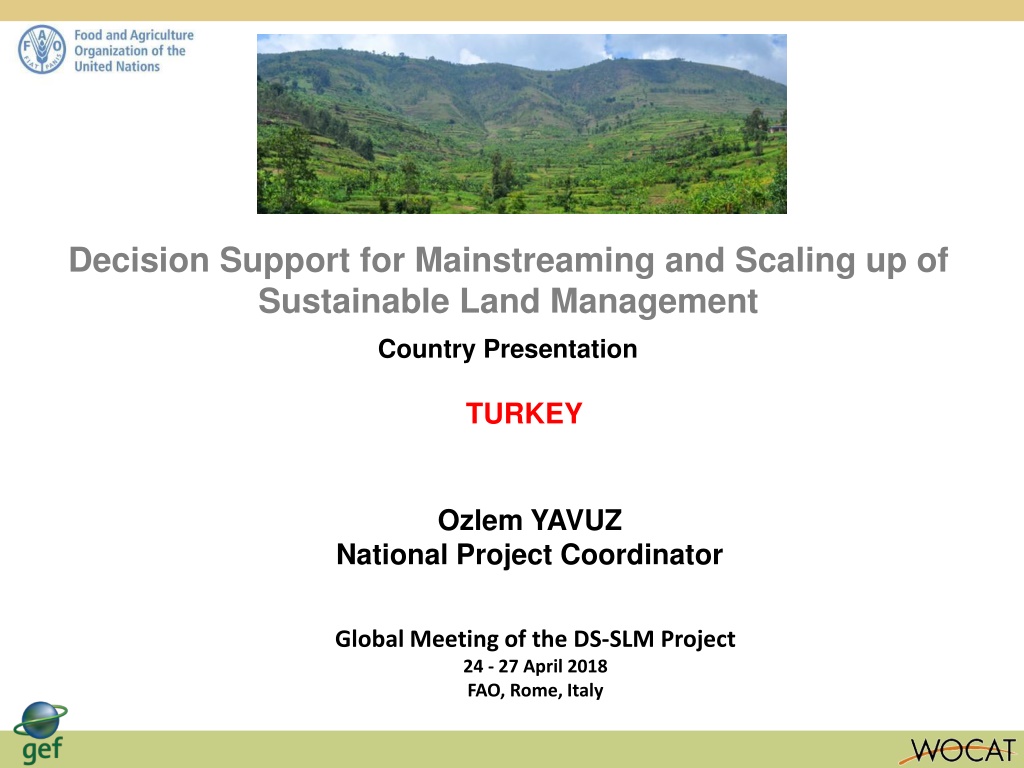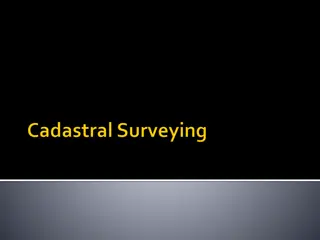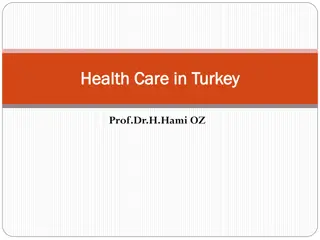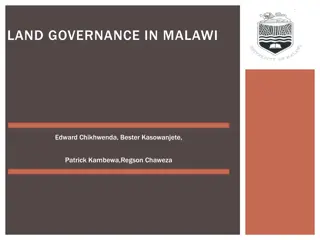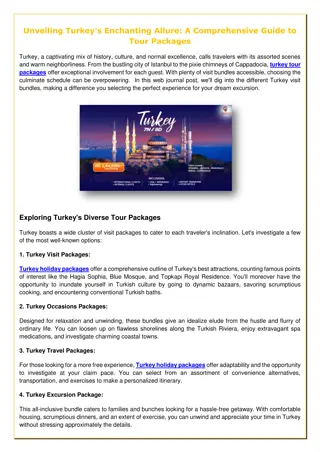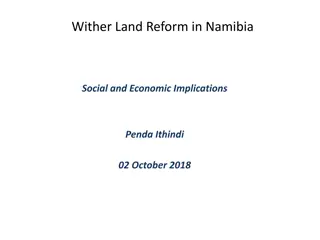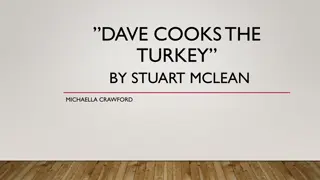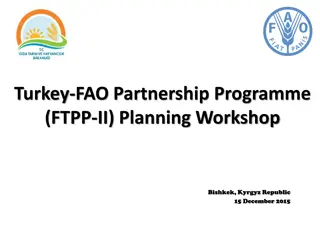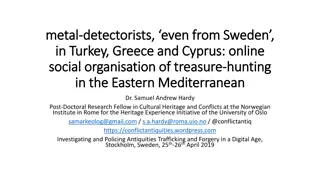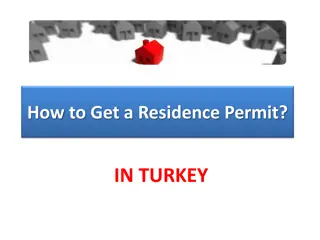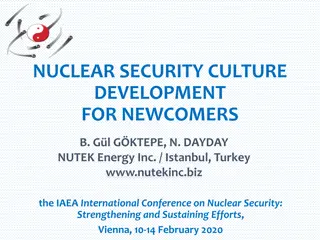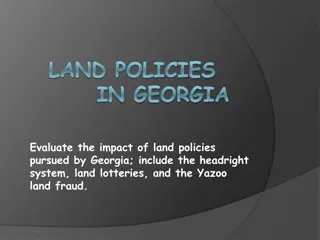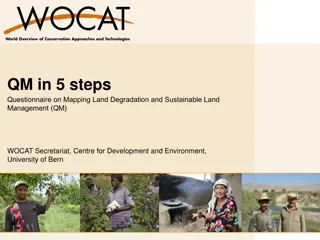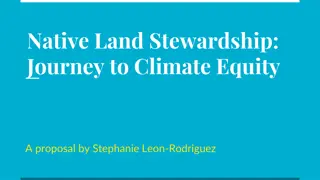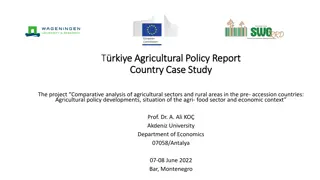Sustainable Land Management in Turkey
This presentation outlines the decision support for mainstreaming and scaling up sustainable land management practices in Turkey. It includes project objectives, institutional arrangements, methodological framework, and modules for national and subnational assessments and landscape selection.
Download Presentation

Please find below an Image/Link to download the presentation.
The content on the website is provided AS IS for your information and personal use only. It may not be sold, licensed, or shared on other websites without obtaining consent from the author.If you encounter any issues during the download, it is possible that the publisher has removed the file from their server.
You are allowed to download the files provided on this website for personal or commercial use, subject to the condition that they are used lawfully. All files are the property of their respective owners.
The content on the website is provided AS IS for your information and personal use only. It may not be sold, licensed, or shared on other websites without obtaining consent from the author.
E N D
Presentation Transcript
Decision Support for Mainstreaming and Scaling up of Sustainable Land Management Country Presentation TURKEY Ozlem YAVUZ National Project Coordinator Global Meeting of the DS-SLM Project 24 - 27 April 2018 FAO, Rome, Italy
Objectives of the project MAIN PROJECT COMPONENTS Integrating the SLM best practices to national action plans, invesment programs and policies, Mainstreaming the concept of sustainable land management, Dissemination of best practices to combat desertification, Capacity enhancement in the assessment and reporting of the situation of land resources.
Institutional arrangements INCEPTION PHASE OF THE PROJECT Established a national project steering committee with project partners (OSIB, GTHB, CEM, OGM, TAGEM, NGO s, and Private Sector Representatives) National Project Management: Lead Institution Project Coordination Unit Steering Committee Working on organizing a project inception workshop with the participation of relevant stakeholders
Module 2. National /subnational assessment NATIONAL/SUBNATIONAL ASSESMENT In the Framework of 2018-2019 Work Plan; Will conduct consultation meetings with related institutions for targeted objectives of SLM assessment
Module 3. Selection of priority landscapes PRIORITY LANDSCAPE a. Criteria used for the selection of the landscapes Climate The history of the land Used agricultural techniques SLM Practices Land rehabilitation practices b. Selected Landscape Karap nar, Konya basin will work with private sector (UNSPED Agriculture and Livestock Inc.)
Module 3. Selection of priority landscapes SELECTED LANDSCAPE Establisted in 2007, Arid climate, vulnerability to wind erosion, and high desertification risk, The soil is calcerous clay, highly poor in organic matter, salinized, and contains high levels of boron mineral, Precipitation is 250 mm annually, Recently, the total land area is 800 ha.
Module 3. Selection of priority landscapes SELECTED LANDSCAPE c. Works done at the selected landscape Soil survey Land reclamation with Gypsum Irrigation and drainage system build-up parselization and crop patterns supporting OM build up in the land climate (drought) smart agriculture and crop rotation
Module 3. Selection of priority landscapes SELECTED LANDSCAPE BEFORE AFTER
Module 4. Local / landscape assessments LOCAL / LANDSCAPE ASSESSMENTS In the Framework of 2018-2019 Work Plan; Establish network and assignment of responsibilities and tasks, Organize a technical training to introduce SLM assesment tools and methods as well as selection pilot site for upscaling best SLM practices.
Module 4. SLM best practices identification IDENTIFICATION THE SLM BEST PRACTICES In the Framework of 2018-2019 Work Plan; Establish partnership and collaboration between global project partners, Organize final workshop with participation of decision-makers of relevant Institutions on scaling out and mainstreaming SLM taking into account assessment findings at national/subnational levels. Make planning and reporting of wider scaling out process of selected best SLM practices by each executive partners
Module 4. SLM best practices identification IDENTIFICATION THE SLM BEST PRACTICES Develop and disseminate a SLM Upscaling Strategy and options by the help of relevant stakeholders, Fulfill final report on operational strategy highlighting recommnedations for SLM upscaling, including technical, policy related, and financial considerations
Module 6. SLM implementation and scaling out SLM IMPLEMENTATION AND SCALING OUT In the Framework of 2018-2019 Work Plan; Input data on the best SLM practices to the global decision support system.
Module 1 & 5. Mainstreaming strategy and Territorial planning MAINSTREAMING STRATEGY AND TERRITORIAL PLANNING In the Framework of 2017-2018-2019 Work Plan; Participated in relevant workshop and training courses organized by global project partners (ie. Uzbekistan), Organize an international workshop for knowledge sharing and identification of best SLM practices, Launch a planning effort in order to have a mutual exchange of ideas and information for LD -WOCAT and relevant tools.
Module 1 & 5. Mainstreaming strategy and Territorial planning MAINSTREAMING STRATEGY AND TERRITORIAL PLANNING Arrange two field trips with experts and inform local actors about SL/WM and SFM showing best practices, Prepare a platform where relevant stakeholders come together, identify gaps about land use systems
Conclusions- lessons learned RESULTS AND DISCUSSION Research Report Sharing Apply
